What Are CC Licenses?
Learning Objectives
By the end of this chapter, you will be able to
- Explain the purpose of Creative Commons licenses.
- Describe the permissions given by the six different Creative Commons licenses.
Some copyright holders want to share their work and give others permission to reuse and adapt their work. Open licenses like Creative Commons (CC) licenses enable copyright holders to do so. CC licenses don’t replace copyright; they work with copyright. For example, by placing a CC license on their work, a copyright holder isn’t giving up their copyright. Instead, the license enables them to tell potential users of a work upfront how that work can be used.
The Elements of CC Licenses
There are six different CC licenses. Each license is composed of a different combination of the following four elements.

One license element is attribution, or “BY.”
The attribution license element requires users of a work to give credit to the creator. All Creative Commons licenses include this element.

Another license element is share alike, or “SA.”
The share-alike license element requires users of a work to share any adaptations of the work with the same or a compatible license.

Another license element is non-commercial, or “NC.”
The non-commercial license element prohibits others from using a work or adaptations of a work for commercial purposes.

The fourth license element is no derivatives, or “ND.”
The no derivatives license element prohibits others from adapting a work.
What is an adaptation? You are likely familiar with adaptations, such as novels adapted for film, or works translated from one language to another. Cropping an image, adding text to an image, or changing an image from full color to black and white are also examples of adaptations. Changing an image from a digital to a print format is not an adaptation, however.
The Six CC Licenses
These four elements—BY, SA, NC, and ND—are combined in different ways in the six Creative Commons licenses.
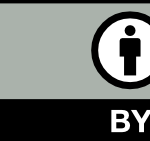 |
The CC BY license is the most permissive, allowing people to use or adapt a work for any purpose, including commercial purposes. It requires only attribution. |
 |
The CC BY-NC-ND is the most restrictive, prohibiting adaptations and allowing only noncommercial uses of a work. |
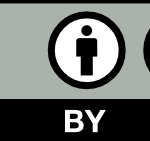 |
And the other four licenses are CC BY-SA, |
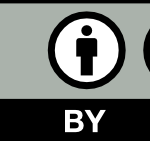 |
. . . CC BY-NC, |
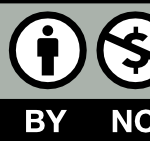 |
. . . CC BY-NC-SA, |
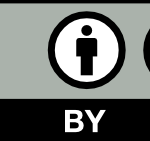 |
. . .and CC BY-ND. |
Notice that the SA element and ND element are never included in the same license because they are incompatible with each other. Whereas the SA element asks that adaptations be shared with the same or a compatible license, the ND element prohibits sharing adaptations altogether.
Remember, a CC license doesn’t replace copyright. Instead, it works with copyright. So a CC license can’t be used to grant permissions that copyright already gives anyway. For example, a CC license can’t be used to give people permission to watch a copyrighted video or listen to a copyrighted podcast. Those uses are already permitted by copyright. Inversely, a CC license can’t be used to place restrictions on work that is already unrestricted anyway, such as works in the public domain.
But what is the public domain? Read the next chapter to find out.
Attribution
This chapter is excerpted from the transcript of Anatomy of a CC License by Rachael Nevins, licensed CC BY-NC 4.0. The learning objectives and introductory text are original to this version, and the text has been adapted for a written (rather than audio) format.
